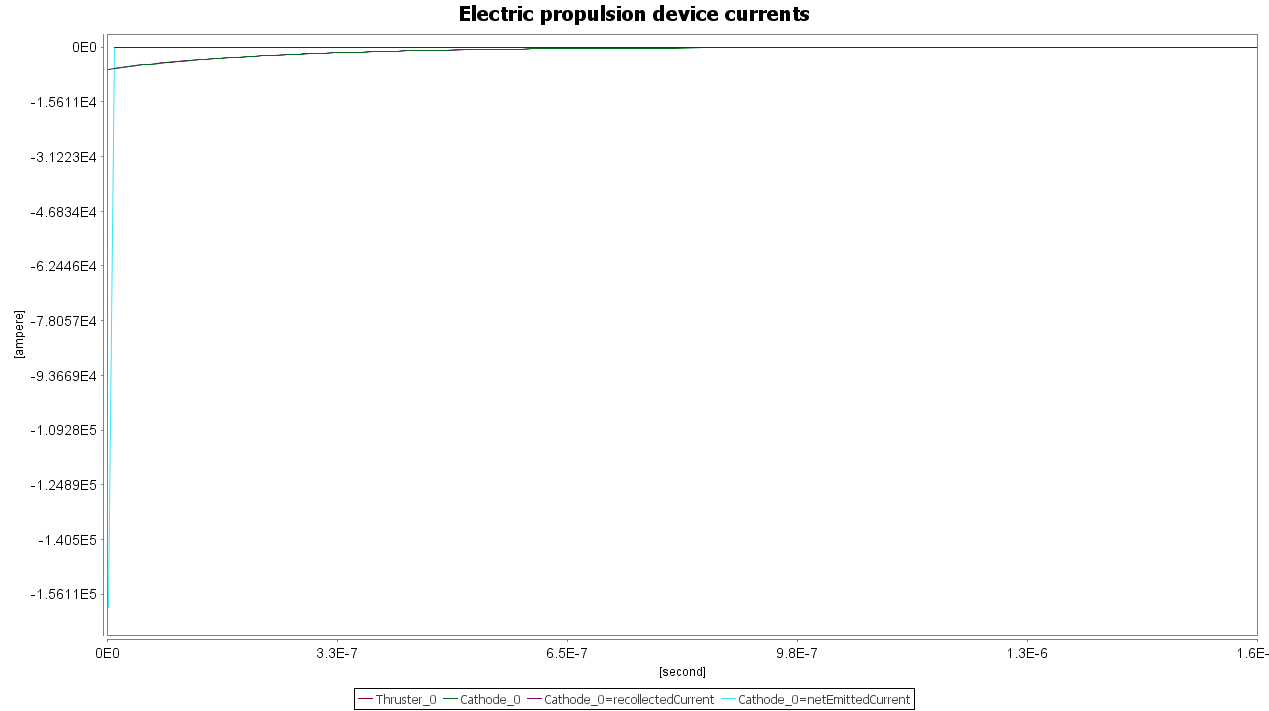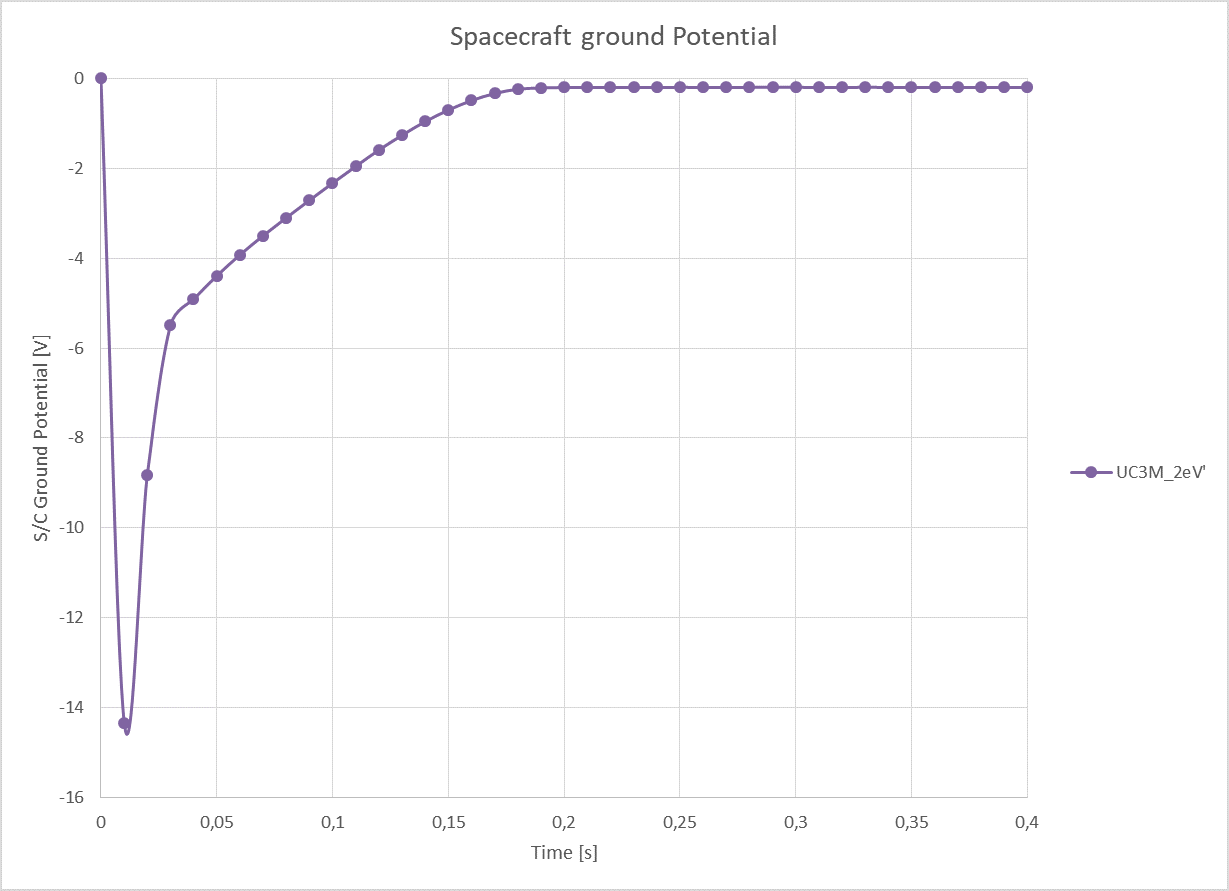The issue is already reported in the GitLab under spis/num#3 (https://code.spis.org/spis/num/-/issues/3) but copied here for broader audience:
Hello,
We are simulating an EP thruster plume (SPT100) together with a spacecraft (EP tutorial case from the SPIS trainings) with SPIS 6.0.4 and 6.1.0 and experience the following problem: Sometimes a very high Cathode net_emitted_current (more than -100 000 A) can be observed at the very first timestep of the simulation. In the next step, the net_emitted_current immediately jumps back to a value in the order of -1 to -10 A, which balances the thruster emitted currents. (~-1.5A for the cathode emitted currents in our specific case). Additionally, the recollected current and hence the Cathode current show really high values (-6000 A) in the beginning and slowly converge to the order of 0A to -10 A. These high initial currents lead to a very strong spacecraft charging at the start of the simulation, which then needs to converge back over a long time. See some example plots here:




We tried different thruster settings and different SPIS versions and with the exact same settings, this behavior occurs for the following variations: -SPIS version 6.0.4, Adiabatic cathode Model: No -SPIS version 6.0.4, UC3M cathode Model: No -SPIS version 6.1.0, Adiabatic cathode Model: No -SPIS version 6.1.0, UC3M cathode Model: Yes -SPIS version 6.1.0, polytropic cathode Model: Yes -SPIS version 6.1.0, SPT100 cathode Model: Yes For this assessment, we used the EP tutorial case from the SPIS trainings (with the original global parameters from the tutorial case and just the surface groups redefined for the version 6.1.0). See here an image of the S/C model of the tutorial case:

Can this observed behavior result from a wrong simulation setting? Otherwise, it seems to hint for a bug in the new 6.1.0 version.
Thanks a lot for your support!
Jens